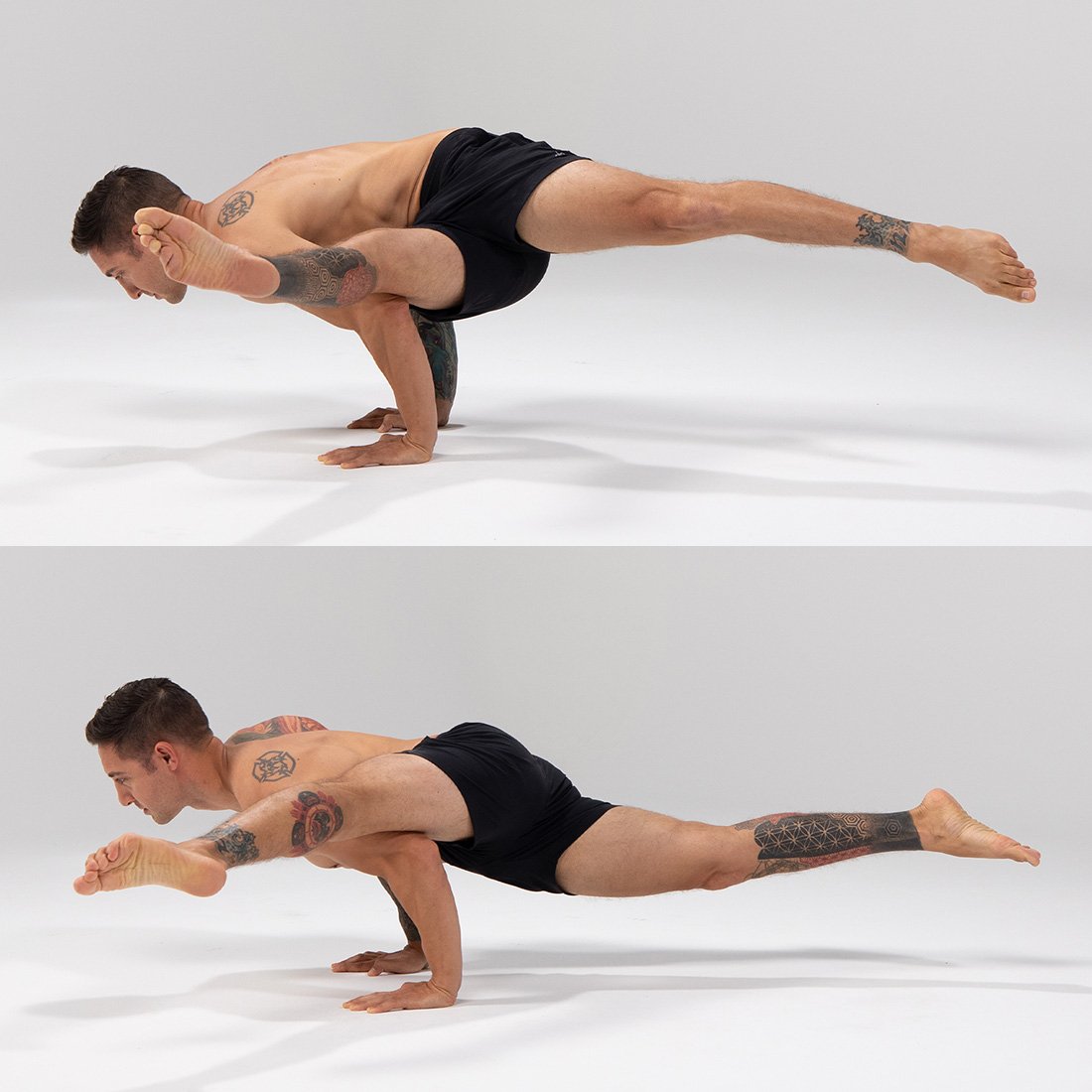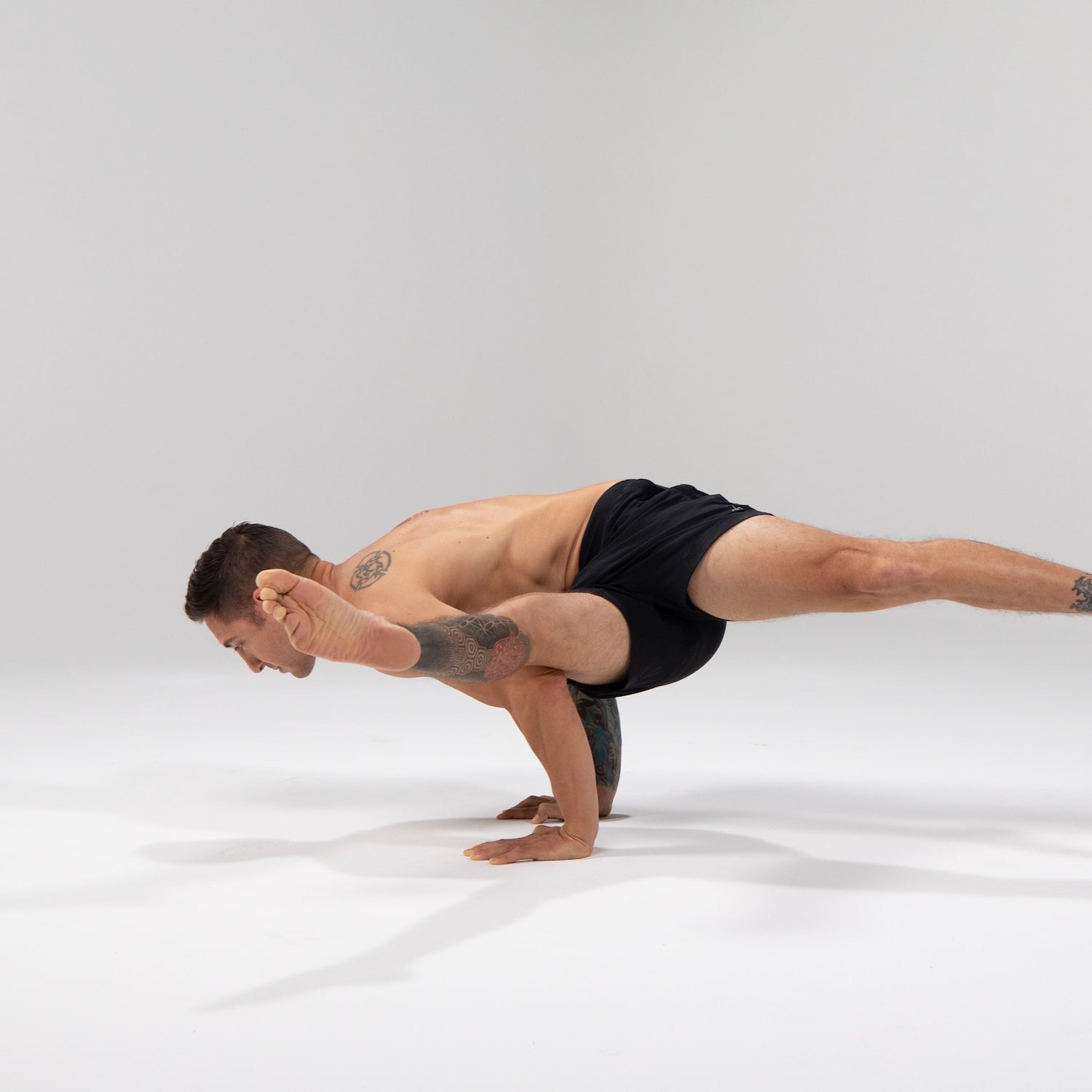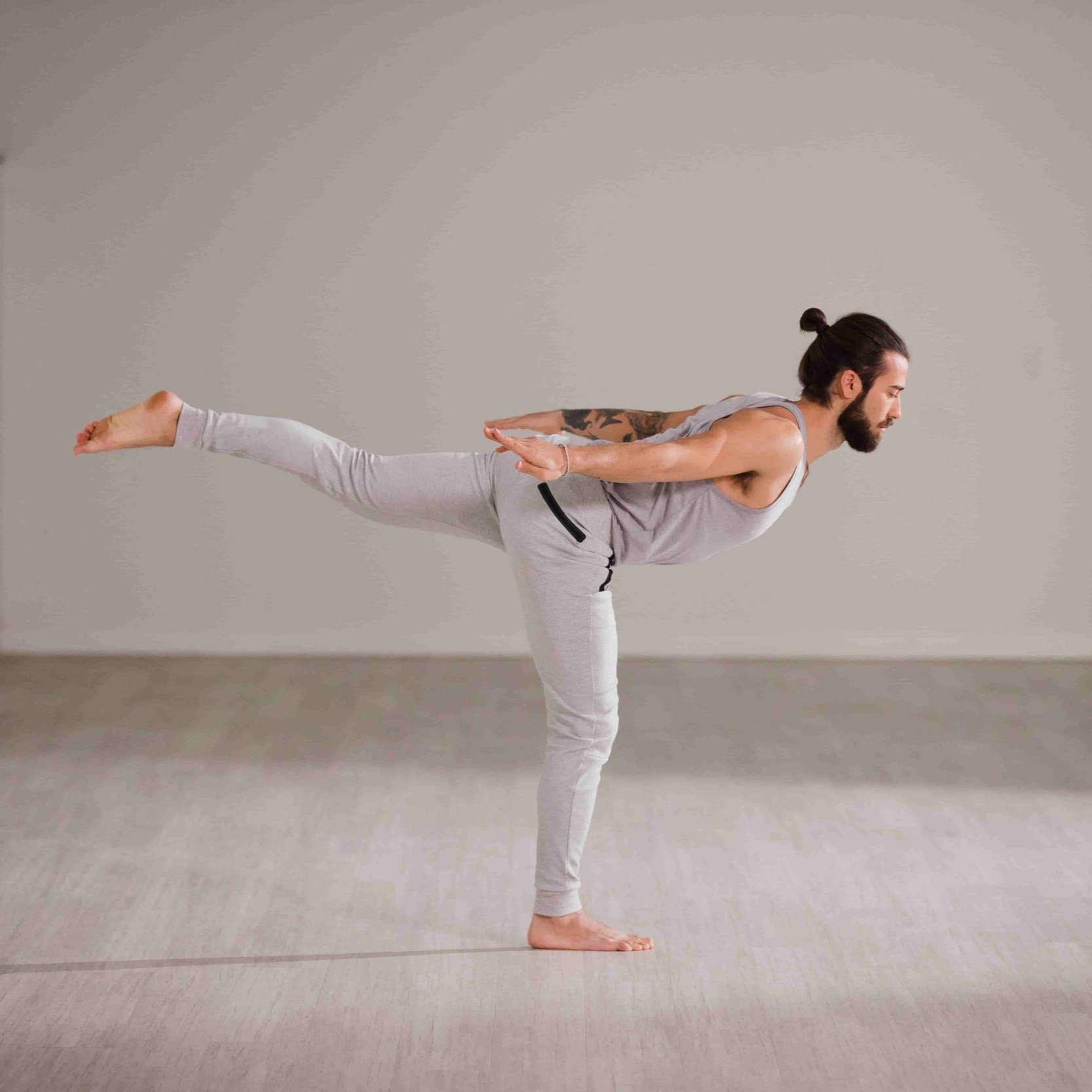Pose Breakdown: Scorpion
So you finally got those handstands down — but you’re craving something more. Scorpion Pose (Vrschikasana) is a great way to start or build on your advanced inversion practice. Adding a backbend adds a whole new layer of challenge to both your balance and your core strength, and getting your legs in that classic scorpion-tail shape requires getting seriously coordinated!
Benefits of Scorpion Pose
Stretches your front body and opens your heart
Builds deep core strength
Increases strength and stability in your upper body and back body
Improves balance and coordination
PreP Poses for Scorpion
Cobra Pose
King Cobra
Pigeon Pose
King Pigeon Pose
Contraindications
Avoid this pose if you’re not fully comfortable in a handstand, you’re suffering from back or hip injuries, or you have high blood pressure.
How to do Scorpion Pose
1.
Get into a handstand using your preferred method, with your legs together.
2.
Begin to bend one knee and charge the straight leg overhead.
3.
As your straight leg is traveling over your head, drop your chest and lift your head to create a backbend.
4.
Bend the straight leg’s toes toward your head as you continue to lift your head.
5.
Bring your toes to touch, both reaching toward your head.
Modifications
Scorpion is often practiced on the forearms instead of the hands. Try both variations to see what feels best for you.
Scorpion Pose History
“Vrischika” means “scorpion” in Sanskrit, so “Scorpion Pose” is a literal translation. Its meaning is pretty straightforward, too: In this posture, your legs are bent like a scorpion’s tail.
While Scorpion isn’t as ancient as Hatha Yoga poses, it’s been practiced throughout the 20th century. BKS Iyengar’s influential 1966 text “Light on Yoga” describes the forearm and hand variations as Vrischikasana I and II, respectively.
“The head, which is the seat of knowledge and power, is also the seat of pride, anger, hatred, jealousy, intolerance and malice,” notes Iyengar in his description. “These emotions are more deadly than the poison which the scorpion carries in its sting. The yogi, by stamping on his head with his feet, attempts to eradicate these self-destroying emotions and passions. By kicking his head he seeks to develop humility, calmness and tolerance and thus to be free of ego.”
Want to build on your Scorpion Pose skills? Try Scorpion Push-Ups with Dylan Werner. Need to work up to a handstand? Check out Learn to Handstand with Brihony Smyth and Journey to Handstand with Carling Harps and Patrick Beach. All three are available for free with a 14-day trial to Alo Moves.









